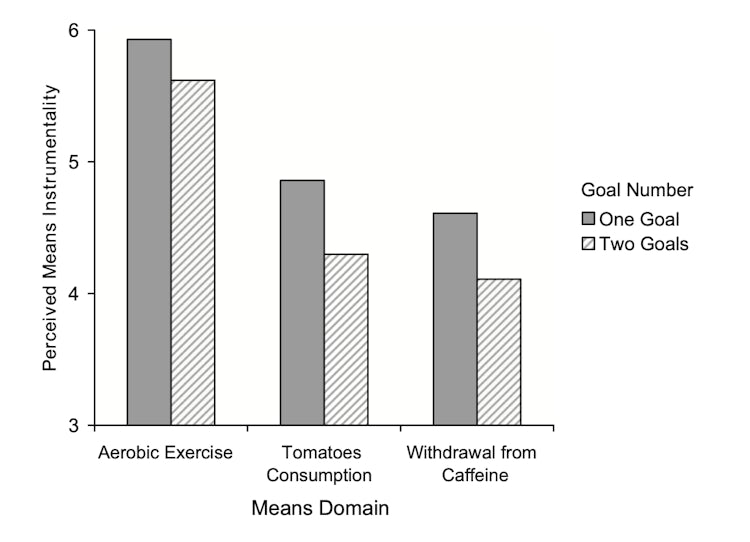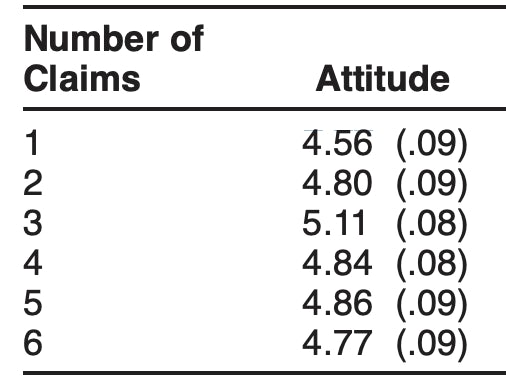For product claims, three is the magic number
Experiments show making just one claim makes that message more effective, but three is the optimum number for driving product preference.

In the late 1960s and early 70s, the creative agency CDP produced a string of legendary campaigns. They included ads for Hamlet (‘Happiness is a cigar called Hamlet’), Heineken (‘Heineken refreshes the parts other beers can’t reach’) and Hovis (including the classic Bike ad from Ridley Scott).
And, as Love or Fear agency founder Dave Dye points out, that’s just the Hs.
CDP was awash with talent, including the likes of Charles Saatchi, Alan Parker and Robin Wight. But perhaps the person most responsible for setting the agency approach was one of the founders, John Pearce.
Pearce held strong views on what made for great ads. And one of his key principles was single-mindedness. According to creative director and author Dave Trott, he regularly used a vivid analogy to explain this approach: “If I throw six tennis balls to you, you won’t catch them all. You may catch one, but the chances are six to one against you catching the most important one. In advertising we know you can only catch one message. So, it’s our job to decide which is the most important message and only throw that one.”
Scarcity is the secret sauce behind everything from Wordle to the McRib
It’s certainly a compelling analogy, but is it correct? Is it really true that we can only catch one message?
Well, here we can turn to the world of behavioural science to look at the experimental evidence.
One of the earliest studies to investigate this question came from Ying Zhang and Ayelet Fishbach from the University of Chicago.
In 2007, the researchers asked 97 participants to read a short essay about the health benefits of running. Sometimes the argument focused on one benefit (“it helps protect you from heart disease”) or two (“it helps protect you from heart disease and maintains healthy bones”). Finally, they asked the participants to estimate the benefits of jogging on heart health.
They found that running was rated around 7% more effective, in terms of heart health, when just one benefit was mentioned. That finding wasn’t a one-off. Zhang ran two more studies, one on the benefits of eating tomatoes, the other on reducing caffeine consumption. Both produced similar results, which you can see below.

This study supports Pearce’s assertion on the benefits of single-mindedness. It suggests that the inclusion of a secondary reason undermines the impact of the primary message. It seems that people believe in a compensatory effect – if you specialise in one thing, you’re likely to be better at it than if you spread your efforts across multiple areas.
However, there are two caveats. First, the experiment is in a slightly different setting to that facing an advertiser. The researchers asked people to read a short essay in a single setting. So, the findings most closely relate to the experience of seeing a single ad. The argument for single-mindedness therefore best relates to that setting and perhaps more messages can be run across a campaign.
Second, Zhang’s study doesn’t mean that the overall message is less effective. It could be that the reduced effectiveness of the first message is offset by the introduction of the second message.
So, if running is quite good at improving heart and bone health, this might be more motivating than learning that it’s very good for heart health alone. It’s hard to know, as the experiment didn’t look into this.
Because of that uncertainty, in 2014 Suzanne Shu from UCLA and Kurt Carlson from Georgetown University conducted a broader study. They recruited an even larger group of 296 participants and showed them ads for a single product in each of five categories: cereal, shampoo, restaurants, ice cream parlours and – in a slightly left-field decision – politicians.
The researchers varied the ads so that they included between one and six claims. For example, the shampoo with one message said, “this shampoo makes hair cleaner”. Whereas the ad with six claims said, “this shampoo makes hair cleaner, stronger, healthier, softer, shinier and fuller!”. Finally, they asked participants to rate how much they liked the product overall.
Shu and Carlson found that including just one claim was the least effective approach. Product-liking increased as more messages were added. Or at least, it did, to begin with; liking peaked when there were three messages. After that, the addition of more points was detrimental. You can see the results in the table.

It seems that Pearce was partially right. In the setting of an experiment, if you make multiple arguments for a product, the strength of each individual one is indeed weakened. But that decline in the impact of the primary message tends to be offset by the benefits of the additional message. This suggests that, all things being equal, three is the magic number.
Or, in Pearce’s terminology, throwing three balls might be ideal after all.
Richard Shotton is founder of the consultancy Astroten and author of The Choice Factory, a book about applying behavioural science to advertising. He tweets at @rshotton.
Will Hanmer-Lloyd is head of strategy at Total Media.







Comments